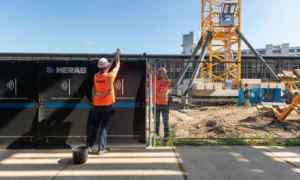Introduction
Asbestos, once hailed as a miracle material for its fire-resistant and insulating properties, has since become infamous for its severe health risks. Exposure to asbestos fibers can lead to serious respiratory conditions, including lung cancer and mesothelioma. Due to its widespread use in construction and other industries before its dangers were fully understood, asbestos remains a concern in many buildings today. As a result, asbestos testing and removal have become critical components of maintaining safe environments for occupants. In this comprehensive guide, we will explore everything you need to know about asbestos testing and removal, including the risks associated with asbestos exposure, the testing process, regulations surrounding asbestos, and the methods of safe removal https://www.simonairquality.com/service/asbestos-testing/.
Understanding Asbestos
Asbestos is a naturally occurring mineral composed of thin, fibrous crystals. Its resistance to heat, fire, and electricity made it a popular choice for various applications, including insulation, roofing, flooring, and fireproofing. There are several types of asbestos minerals, including chrysotile, amosite, and crocidolite, with chrysotile being the most commonly used variety.
Health Risks of Asbestos Exposure
Despite its usefulness in various industries, asbestos poses significant health risks when its fibers are released into the air and inhaled. These microscopic fibers can become lodged in the lungs, leading to inflammation and scarring over time. Prolonged asbestos exposure can cause serious respiratory diseases, such as asbestosis, lung cancer, and mesothelioma, a rare but aggressive form of cancer that primarily affects the lining of the lungs and abdomen. The latency period between asbestos exposure and the onset of symptoms can range from 10 to 50 years, making early detection and prevention crucial.
Asbestos Testing Process
Testing for asbestos is a critical step in identifying its presence in buildings and structures. Professional asbestos inspectors typically conduct comprehensive inspections to determine if asbestos-containing materials (ACMs) are present. The testing process may involve visual inspections, bulk sampling, and air monitoring.
Visual Inspection: During a visual inspection, trained professionals survey the building for materials that may contain asbestos. These materials include but are not limited to insulation, floor tiles, ceiling tiles, roofing materials, and pipe insulation. Suspect materials are documented and sampled for laboratory analysis.
Bulk Sampling: Bulk sampling involves collecting small pieces of suspect materials for laboratory analysis. Samples are carefully collected using appropriate safety measures to minimize the release of asbestos fibers into the air. These samples are then sent to accredited laboratories for testing.
Air Monitoring: Air monitoring is conducted to assess the concentration of asbestos fibers in the air. This process involves collecting air samples using specialized equipment and analyzing them for asbestos content. Air monitoring is often performed before, during, and after asbestos removal activities to ensure the safety of workers and occupants.
Regulations and Guidelines
Various regulations and guidelines govern the testing, handling, and removal of asbestos to protect workers and occupants from exposure. In the United States, the Environmental Protection Agency (EPA) and the Occupational Safety and Health Administration (OSHA) have established regulations for asbestos management in buildings and workplaces.
The Asbestos Hazard Emergency Response Act (AHERA) requires schools to inspect for asbestos-containing materials and develop management plans to prevent exposure. Similarly, the Asbestos National Emission Standards for Hazardous Air Pollutants (NESHAP) regulates the demolition and renovation of buildings containing asbestos to minimize the release of asbestos fibers into the air.
In addition to federal regulations, state and local governments may have their requirements for asbestos testing and removal. It is essential to consult local authorities and adhere to all applicable regulations when dealing with asbestos-containing materials.
Safe Asbestos Removal Techniques
Once asbestos-containing materials are identified, proper removal is necessary to eliminate the risk of exposure. Asbestos removal should only be performed by licensed and trained professionals to ensure safety and compliance with regulations. The removal process typically involves the following steps:
Preparation: Before removal begins, the work area is sealed off and ventilated to prevent the spread of asbestos fibers. Workers wear appropriate personal protective equipment (PPE), including respirators, disposable coveralls, and gloves, to minimize exposure.
Wetting: Asbestos-containing materials are wetted down with a solution to suppress the release of fibers during removal. Wetting helps to prevent fibers from becoming airborne and reduces the risk of exposure.
Removal: Trained professionals carefully remove asbestos-containing materials using specialized tools and techniques. The materials are double-bagged in leak-tight containers and labeled as hazardous waste for proper disposal.
Cleaning: Once removal is complete, the work area is thoroughly cleaned using HEPA vacuums and damp cloths to remove any remaining asbestos fibers. Air monitoring may be conducted to ensure that the air quality meets safety standards.
Disposal: Asbestos waste is disposed of by local, state, and federal regulations. It is transported to approved disposal sites equipped to handle hazardous materials and prevent environmental contamination.
Conclusion
Asbestos testing and removal are essential processes for safeguarding public health and the environment. By identifying and properly managing asbestos-containing materials, we can reduce the risk of exposure and prevent the development of asbestos-related diseases. It is crucial to work with qualified professionals and adhere to regulatory requirements to ensure the safe handling and removal of asbestos. With proper precautions and proactive management, we can mitigate the risks associated with asbestos and create safer environments for all.









































